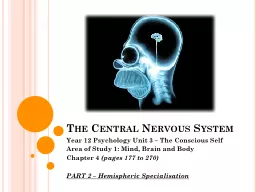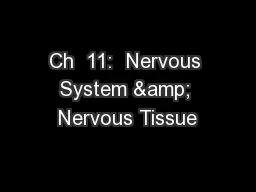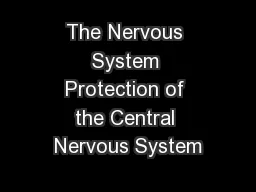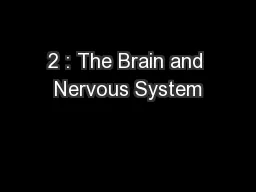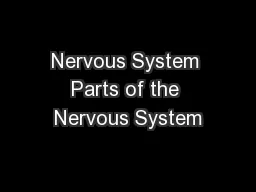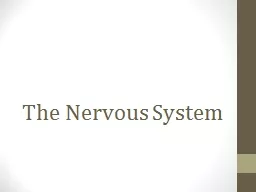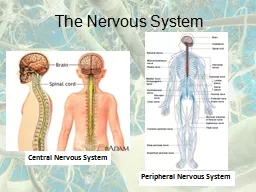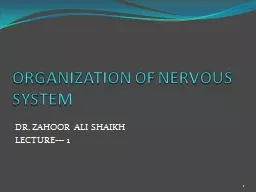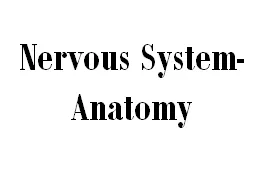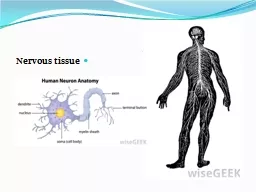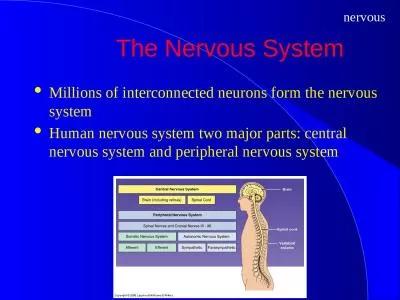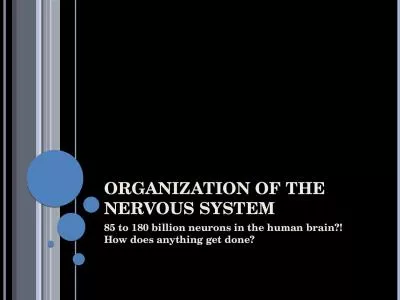PPT-The Central Nervous System
Author : jane-oiler | Published Date : 2016-05-04
Year 12 Psychology Unit 3 The Conscious Self Area of Study 1 Mind Brain and Body Chapter 4 pages 177 to 270 PART 2 Hemispheric Specialisation The hemispheres
Presentation Embed Code
Download Presentation
Download Presentation The PPT/PDF document "The Central Nervous System" is the property of its rightful owner. Permission is granted to download and print the materials on this website for personal, non-commercial use only, and to display it on your personal computer provided you do not modify the materials and that you retain all copyright notices contained in the materials. By downloading content from our website, you accept the terms of this agreement.
The Central Nervous System: Transcript
Download Rules Of Document
"The Central Nervous System"The content belongs to its owner. You may download and print it for personal use, without modification, and keep all copyright notices. By downloading, you agree to these terms.
Related Documents

